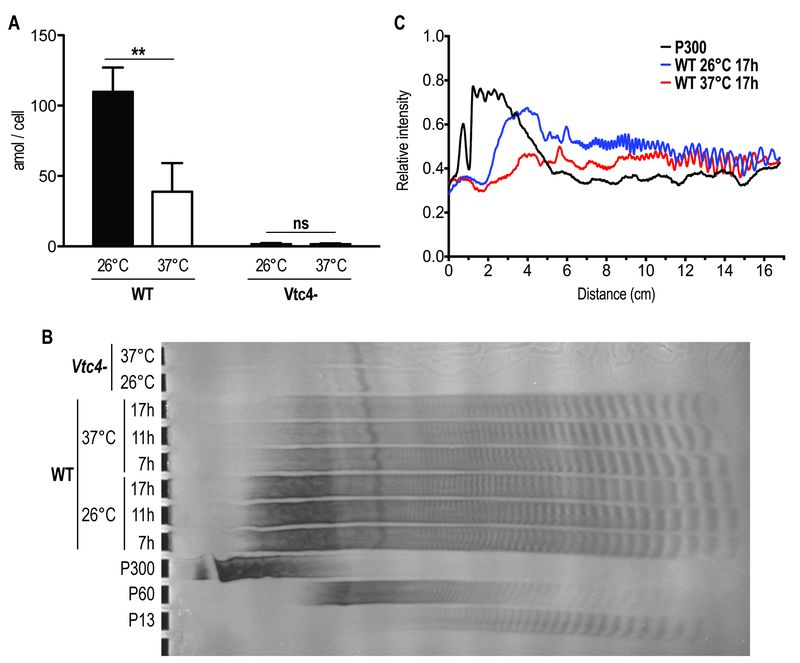Back to article: Importance of polyphosphate in the Leishmania life cycle
FIGURE 9: Higher temperature increases Leishmania consumption of polyP. (A) L. major logarithmic phase (day 3 post dilution) promastigotes were incubated for 6 hours at 26°C or 37°C. PolyP was quantified in attomole/cell (amol/cell) and represented as absolute values. Results of a pool of 3 independent experiments were expressed as mean ± SD of polyP levels. Statistical significance was assessed by Two-way ANOVA; ** p < 0.01, ns: non-significant. (B) PolyP was extracted from logarithmic phase (day 3 post dilution) L. major promastigotes exposed at different temperatures for the indicated time. PolyP chains were separated by gel electrophoresis and visualized by negative DAPI staining on a 35% polyacrylamide gel. PolyP standards represent an average of the respective sizes ranging from 13 up to 300 residues (P13, P60 and P300). (C) Quantification of polyP chains consumption by ImageJ of lanes of Fig. 9B representing polyP chains in Leishmania parasites cultured at 26°C (blue line) or exposed to a 37°C heat shock for 17h (red line). The black line represents the P300 standard and was included for comparison. The x axis represents the distance from the top of the gel and the y axis the relative intensity of the signal.

